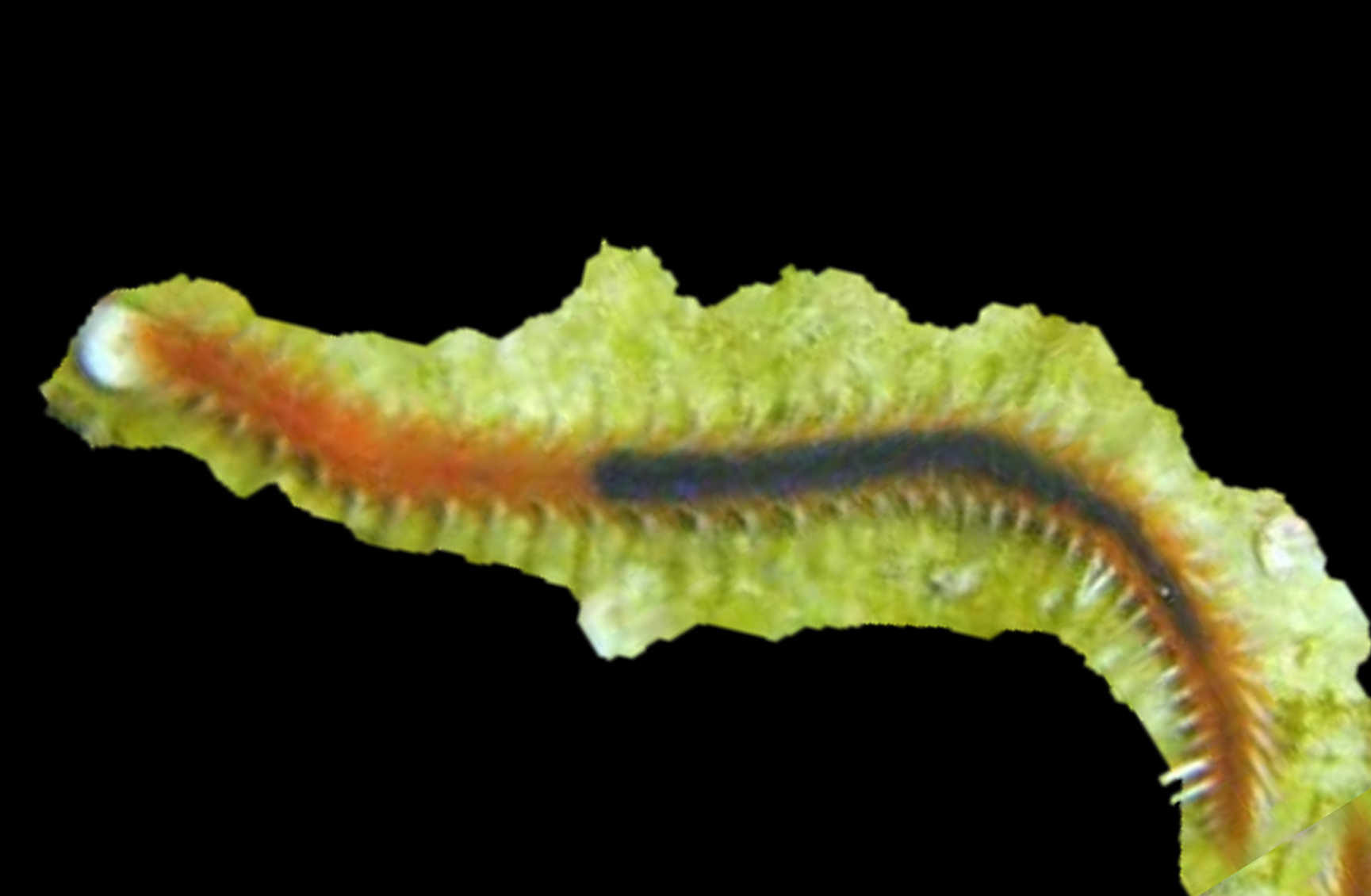PEST CONTROL: Peppermint for Aips, Mithrax for Bubble algae, and Oliva for Worms. Cure it, prevent it, solve it!
So many pests!
Aiptasia anemones, Bubble algae, Bristleworms and the greatly feared Fireworms. Oh and a fat Goth!
Aiptasia anemones, Bubble algae, Bristleworms and the greatly feared Fireworms. Oh and a fat Goth!
PEST CONTROL: Peppermint for Aips, Mithrax for Bubble algae, and Oliva for Worms.
Cure it, prevent it, solve it.
All of these common pests can be a nightmare if they get out of hand. We quite often see hobbyists even breakdown their entire tank to get rid of these pests, but, with the right inverts you can stop them.
All of these pests can suddenly explode in numbers without warning. Causing mayhem in a reef tank.
Prevention is certainly better than cure. If you haven't got any Aiptasia anemones, Bubble algae, or, Bristleworms, then good! But sooner or later they will arrive. Dipping corals doesn't stop them getting in because all 3 are tougher than the coral. The best way to keep your tank safe us to ensure you have some if these three inverts so they are ready to pounce on any intruders. All 3 of these inverts will eat normal food too, so they won't starve if they can't find their preferred victims.
Aiptasia anemones
Aiptasia spread like wildfire and are difficult to remove. Any that get damaged shed pieces into the water. Each Aip you kill if not done right turns into 20 little ones. They sting corals, can block equipment up, and large ones even injure or kill small fish.
Aiptasia anemones, also called glass anemones, can sting corals and even eat small fish.
Peppermint shrimps (Lysmata wurdemanni).
Peppermint shrimps will eat Aips happily. But they're not immune to the anemones sting.
So you need a gang of Peppermints. Some of the shrimps grab the tentacles and pin the anemone to the rock whilst the others attack from behind. Single Peppermint shrimps can only handle tiny aips and may even get eaten by the Aip if they tackle big ones on their own.
Peppermint shrimps work best in packs of 3-12. As a rough guide for prevention a gang of 3 can patrol a 200 litre pretty well. If you've already got a few Aips but can only see 6 or less, then a gang of three is needed per 100 litres. If you've got a lot of Aips then a gang per 50 litres will be needed.
Lysmata wurdemanni, the true Peppermint shrimp. there are many species of very similar looking Lysmata shrimps, many of which are often falsely sold as Peppermints. Not all Lysmata species eat anemones, and some species eat corals. Make sure you are certain which species you have, and only buy from a reputable source.
Bubble algae, also known as Sailor’s eyeballs.
Bubble algae is the largest single celled organism. It's single cell can get to 5" across! They smother corals, clog pipework and intakes. It can cause equipment failure and even a flood in your house. They can be removed by hand but each one you pop makes 200 more!
Bubble algae are heavily studied. they are the largest single celled organism on the planet. Each bubble can reach sizes as large as 5”. I believe the last record holder for the largest one ever grown was Monaco aquarium in France.
Mithrax crabs (Mithrax sp.).
Mithrax crabs know what to do. For prevention one Mithrax per 200 litres, if you can already see Bubble algae then add 1 per 100 litres. For bad problems add 1 per 50 litres. They are reef safe and eat Hair algae too. These ones are a cool red colour.
A Ruby mithrax crab, wild imported from Florida in January 2022. Most Mithrax crabs are green, these Ruby red ones are quite rare in comparison, but, much more attractive!
Bristle worms
Bristle worms are often thought of as mostly harmless scavengers, and to be fair they mostly are. Getting their sharp spines in your finger isn't great, but, it doesn't sound too bad right?
Whilst most Bristle worm species are pretty harmless, correctly identifying the species I'd very difficult, and many species aren't even described yet. Some species can grow very large over 6ft (2m) in fact, but they are usually deep-water species. However ones that grow to over 12" are not uncommon, and I've seen enough videos from customers over the years of shrimps and gobies being hunted and eaten by large Bristle worms, that I always recommend removing them (carefully).
Bristle worm. The fine hairs are like fibreglass, and are easily impaled into a careless finger, which is quite unpleasant. This is one of the more commonly seen Bristle worm species, but exact identification is often very difficult.
Fireworms . . . Learn to fear these!
Even worse are the much feared Fireworms. Now Fijian live rock until imported they are rarer than they used to be, but, every month we see them arrive deep inside corals. A sting from a Fireworm can cause blinding pain in the hobbyist for hours or even days. Permanent nerve damage is common, and if neglected can result in fingers or thumbs being amputated sometimes.
Fireworms can inflict blinding pain lasting for hours. Permanent nerve damage is commonplace, and I have ever seen a few amputations as a result. Treat these with serious respect!
Oliva snail (oliva sp.).
One Oliva snail can keep the numbers down in a 200 litre quite happily. A few more are needed for tanks with a lot of worms. Olive also scavenge and help turnover the sand bed too, so they are well worth having.
Oliva snails eat Bristle worms and also Fireworms too. Very useful indeed.
And now the bad news!
The bad news is that all 3 of these species are hard to get, and are often only available 4-6 ,months of the year.
I'd definitely recommend adding them to your tank to keep it safe, and they're quite interesting creatures to have anyway. We only have very few, so unfortunately there won't be enough for everyone.
I'd get them today if you can as they will soon sell out.

















